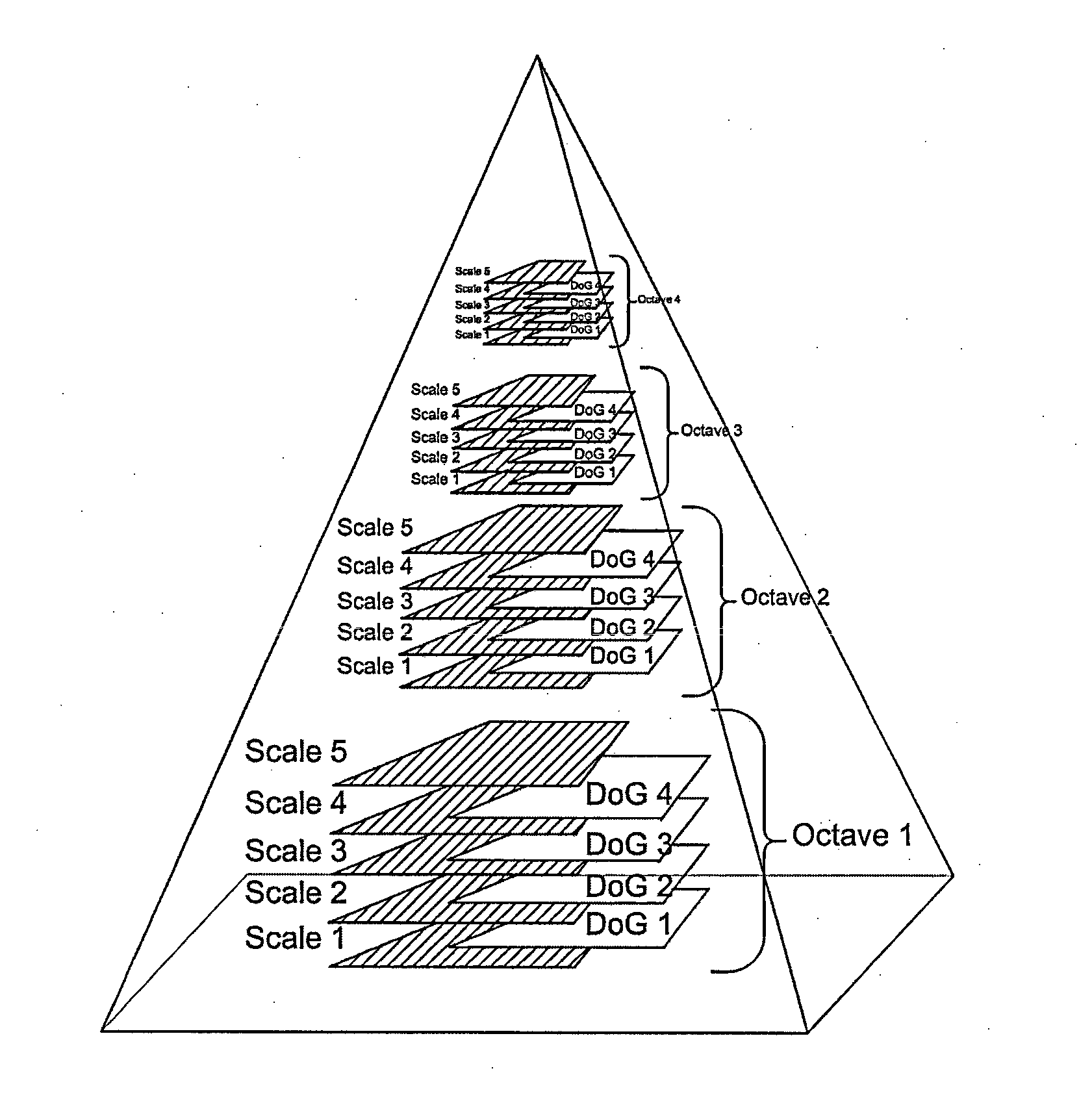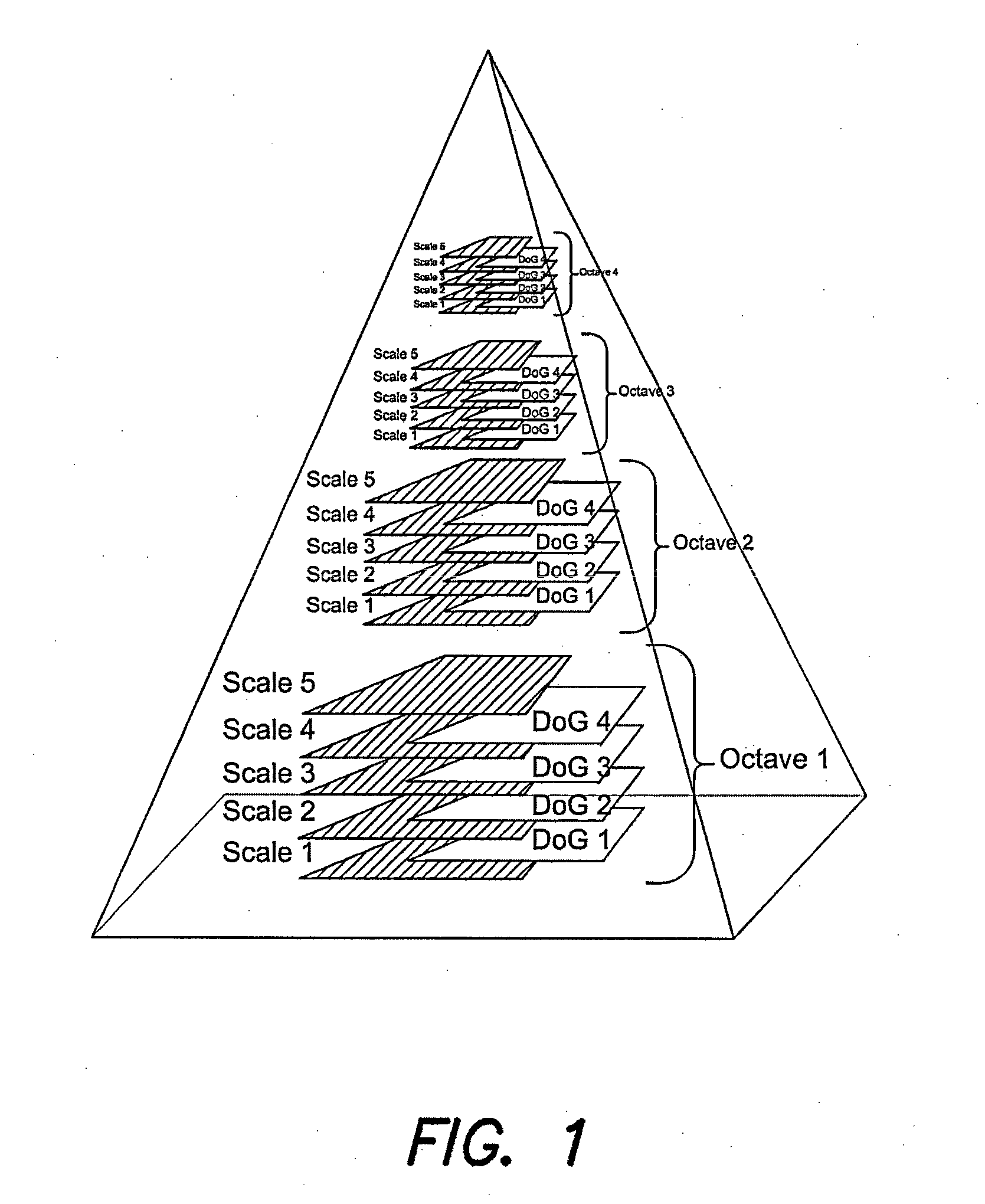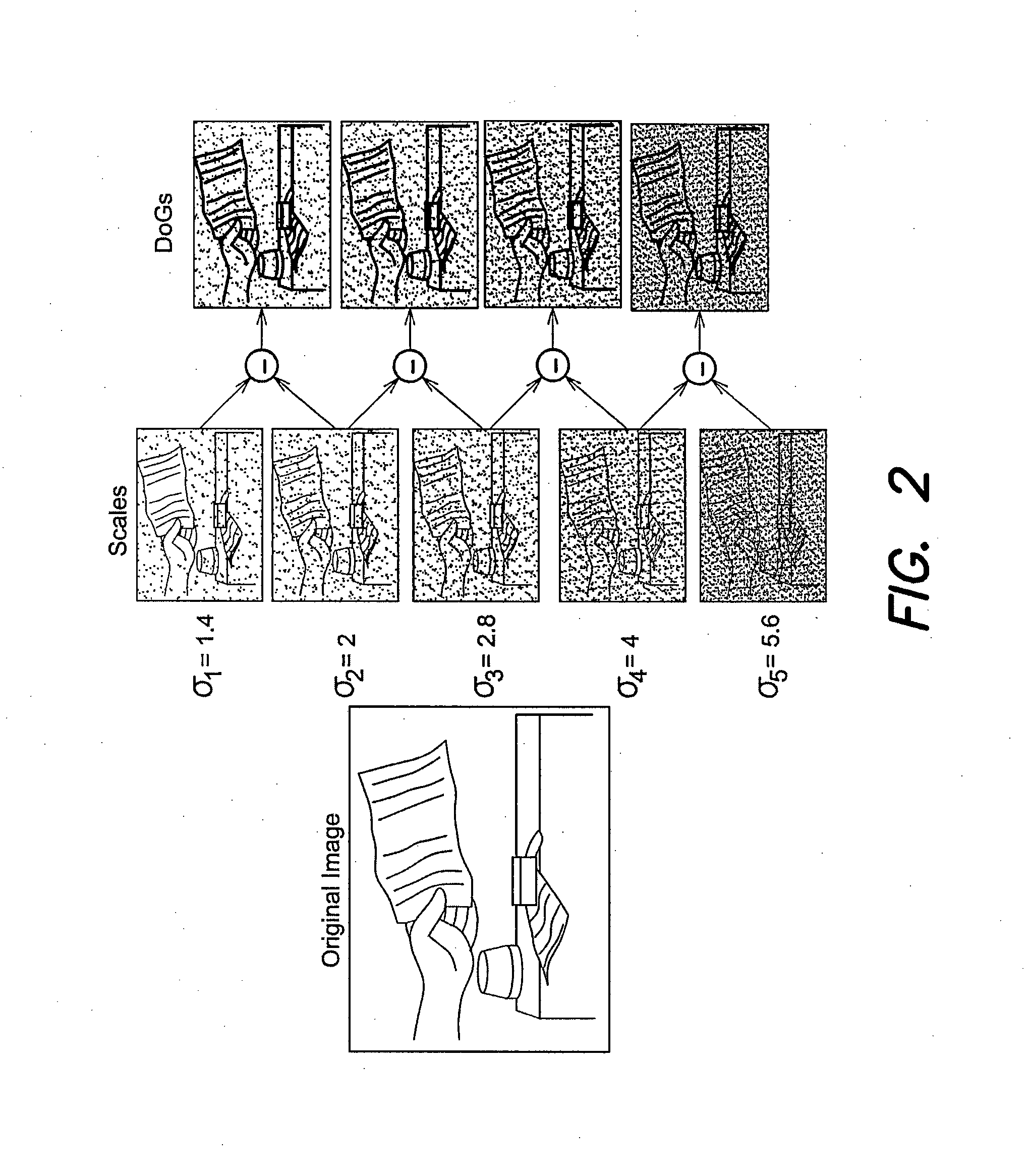Hardware coprocessor for stripe-based interest point detection
a coprocessor and stripe technology, applied in the field of image processing and computer vision, can solve the problems of high processing cost, high processing cost, and inability to meet real-time performance of software implementations running on general purpose processors, and achieve the effects of reducing the operation of the central processing unit, reducing the transmission bitrate, and less expensive wiring
- Summary
- Abstract
- Description
- Claims
- Application Information
AI Technical Summary
Benefits of technology
Problems solved by technology
Method used
Image
Examples
Embodiment Construction
Implemented Algorithms
[0034]The proposed coprocessor performs all the interest point detection, including the DoG pyramid creation and local extrema detection. In the following sub-sections, a brief description of the underlying algorithms is provided.
Difference-of-Gaussian (DoG) Pyramid
[0035]Difference-of-Gaussian (DoG) is a band-pass filtering operator obtained by calculating the difference, point-by-point, of two low-pass filtered (blurred) versions of the same grayscale image, each obtained by convolving the image with two bi-dimensional Gaussian filters having different radii:
DoG(x,y,σ)=L(x,y,kσ)-L(x,y,σ)=G(x,y,kσ)*I(x,y)-G(x,y,σ)*I(x,y)(1)whereG(x,y,σ)=12πσ2-x2+y22σ2,
I(x,y) is the input image, kεR and “*” is the convolution operator.
[0036]It can be demonstrated that the DoG filter, with its typical Mexican hat transfer curve is an approximation of the well-known scale-normalized Laplacian-of-Gaussian (LoG), employed for edge detection problems. The DoG operator is the initial ...
PUM
 Login to View More
Login to View More Abstract
Description
Claims
Application Information
 Login to View More
Login to View More - R&D
- Intellectual Property
- Life Sciences
- Materials
- Tech Scout
- Unparalleled Data Quality
- Higher Quality Content
- 60% Fewer Hallucinations
Browse by: Latest US Patents, China's latest patents, Technical Efficacy Thesaurus, Application Domain, Technology Topic, Popular Technical Reports.
© 2025 PatSnap. All rights reserved.Legal|Privacy policy|Modern Slavery Act Transparency Statement|Sitemap|About US| Contact US: help@patsnap.com



